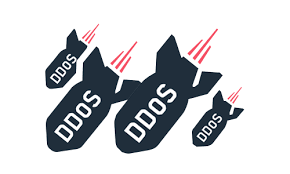A series of unfortunate events
A customer of my employer Redpill Linpro was recently the target of a DDoS attack. While investigating the attack, we found a large number of HTTP requests with the User-Agent named CITRIXRECEIVER. The clients performed GET requests to multiple URLs on the customer’s web site at the rate of several thousand packets per second. The originating IP addresses were mostly Norwegian and even registered on major companies and organizations, but we also registered multiple requests from south-east Asian countries like Singapore, Thailand, and Vietnam.

At first we didn’t think those were a part of the ongoing DDoS attack, but the frequencies and rates were alarming. The fact that they seemed to hammer the same set of URLs over and over again was also somewhat concerning, since we’ve previously experienced similar scripted attacks from botnets of hijacked browsers running in zombie mode without the computer owner’s knowledge.
Tracking down and analyzing the requests we found that this was probably just something as simple as misconfigured Citrix clients, set to poll a defined beacon as described here. When contacting the owner of one of the more aggressive IP ranges, they confirmed that the URL of the customer’s website had indeed been configured as an “am I alive or not” connectivity check for no less than 25 000 (!) client systems, which absolutely explained the insane polling rate. Those 25 000 clients were associated with a single company – additional requests poured in from other organizations as well.
However, the poll was designed to be HEAD requests which are supposed to be non-intrusive and harmless. So why did they come across as multi-URL GET requests, causing increased load on the customer’s systems?

The first part of the explanation is that Varnish, which is used extensively at the customer’s web site, will by default convert a HEAD request to a GET request before responding. In many cases this makes sense, while for plain polling purposes HEAD requests are often configured to shortcut the processing and return a simple response.
The second part has to do with Varnish’ advanced capacity of Edge Side Includes (ESI), which allows a mainly static web site to include one or more dynamic components. The customer’s front page URL includes certain uncacheable, per-visitor components, so when someone accesses the front page multiple dynamic components are processed and included before returning the content.
Since HEAD requests weren’t specifically cut short, the simple and theoretically harmless beacon polling from thousands of Citrix clients turned out to have quite some impact after all.
PS: Not surprisingly, sysadmins configuring the CITRIXRECEIVER beacon polling seem to select well-known and/or short URLs for their connectivity check. Used with BBC’s web site, CITRIXRECEIVER has been reported as the second most popular User-Agent.